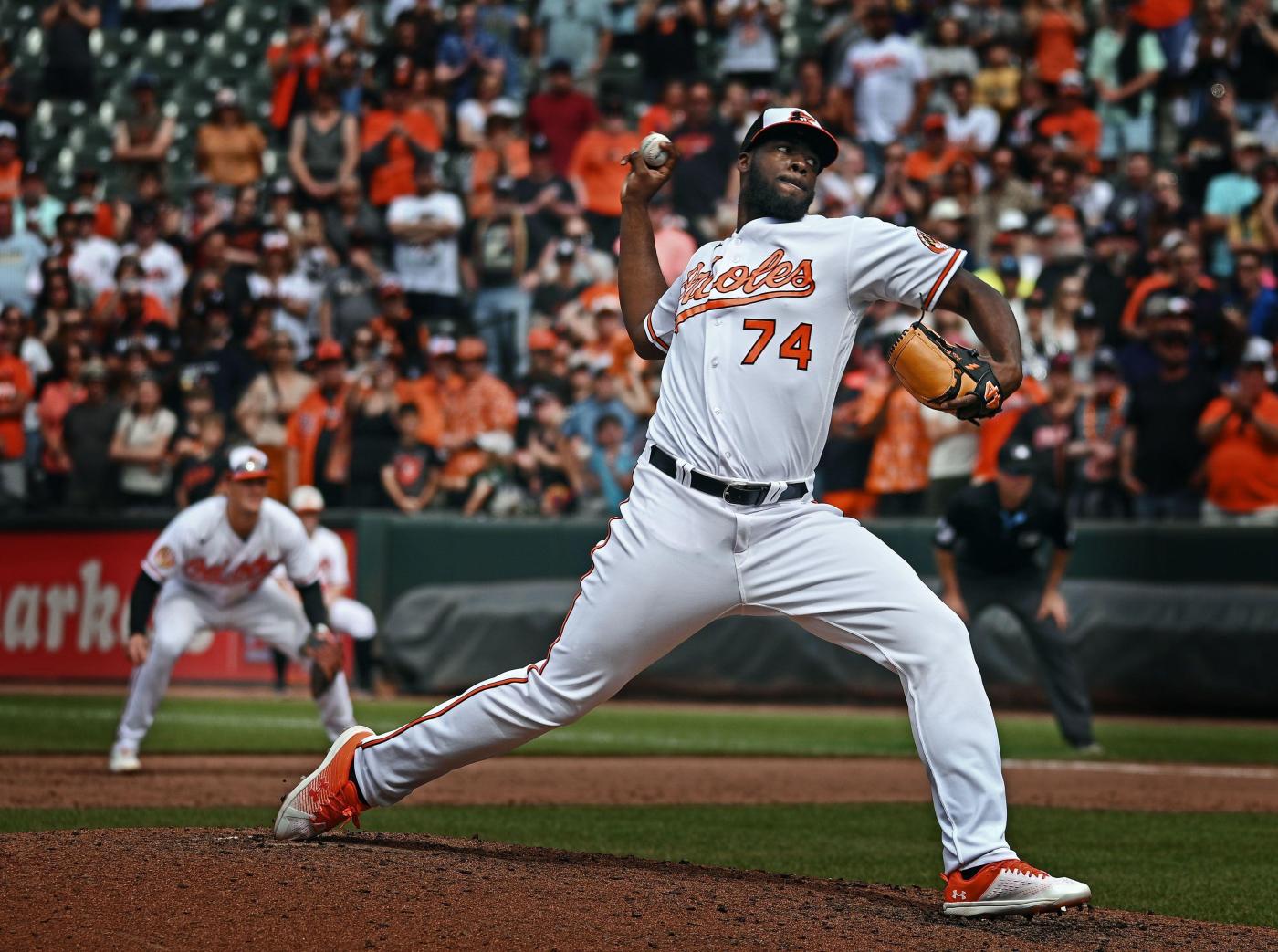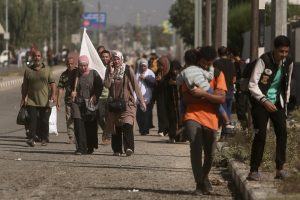
Five questions the Orioles will face this offseason
The Orioles’ offseason began much sooner than they hoped it would. Its true start is approaching.
With the World Series over, the MLB offseason is set to begin. The Orioles will enter it coming off a campaign in which they won 101 regular-season games and the American League East only to lose their only three playoff games to the eventual champion Texas Rangers.
Despite the season generally being a success, plenty of questions hang over the club this winter. Here are five of the most significant.
What happens first: Mike Elias signs a player to a long-term deal or John Angelos signs a long-term lease?
The Orioles, as both a team and a business, are lacking long-term commitments.
Next month will mark five years since Elias became the Orioles’ executive vice president and general manager. In that time, the only guaranteed multiyear major league contracts Baltimore has given out have gone to a pair of pitchers who were about to miss significant time because of Tommy John elbow reconstruction.
That could change in many forms this winter. The Orioles could upgrade the top of their rotation, the back of their bullpen and their right-handed hitting options, and signing a free agent to address those needs could require a multiyear contract. Likewise, the Orioles have several candidates for extensions, notably phenoms Adley Rutschman and Gunnar Henderson. Locking down any of them would not only benefit the team in the future but also help to ease the concerns that were sparked when Angelos, the Orioles’ CEO and chairman, told the New York Times the organization would be “financially underwater” if it gave out nine-figure contracts to several players.
Angelos has his own committing to do. The Orioles’ Camden Yards lease with the Maryland Stadium Authority expires Dec. 31, and although the sides have a memorandum of understanding, that agreement isn’t binding, and much remains to be sorted out.
The Orioles and the MSA could end up with a brief extension that allows time to finalize the details of a longer lease, though that was the purpose of a two-year extension in 2021. It’s possible, then, that this question carries into a future offseason, too.
How do they handle their arbitration-eligible players?
The Orioles have 14 players who are certain to be eligible for arbitration — one behind both New York teams for the most in the majors — and another three who could join them as “Super Twos.” Arbitration is a process in which players with, typically, at least three years of major league service time but fewer than the six years required to reach free agency can receive pay raises. Some players with between two and three years are also eligible.
In the Orioles’ case, these players are projected to account for a significant portion of not only the roster but also the payroll. MLB Trade Rumors, Cot’s Baseball Contracts and Spotrac all forecast the group’s collective 2024 salaries at more than $50 million, with all other active Orioles accounting for about $10 million.
Averaging the three projections, outfielder Anthony Santander is expected to make about $12.8 million in his final year of arbitration before reaching free agency, a value that would be the largest the Orioles have given to an arbitration-eligible player since Manny Machado received $16 million heading into 2018. Fellow outfielders Cedric Mullins and Austin Hays and left-hander John Means are expected to receive at least $5 million.
There are no guarantees the Orioles retain all eligible players; they have the option to not tender them a contract by Nov. 17 and allow them to become free agents. Infielders Jorge Mateo and Ramón Urías, both projected to receive more than $2 million, are seemingly among those most at risk of that possibility.
Are they willing to add an ace?
By virtue of their payroll and their farm system, the Orioles could theoretically afford any top starter available in either free agency or a trade. Thus, this isn’t a question of whether they can, but whether they’re willing to.
The top free-agent starters available are Shohei Ohtani (the two-way star won’t pitch in 2024 after undergoing Tommy John surgery), Aaron Nola and Blake Snell, but it’s difficult to imagine the Orioles, given how they’ve operated under Elias and Angelos, making the level of offer required to add one of them.
Cleveland’s Shane Bieber, Milwaukee’s Corbin Burnes, Tampa Bay’s Tyler Glasnow and Chicago’s Dylan Cease are trade candidates who would slot near or at the top of Baltimore’s rotation. But Cease is the only among them who won’t be a free agent after the 2024 season, and it’s fair to wonder whether the Orioles would be willing to part with the prospects required to land any of the other three for what could be only one season.
Do they need a closer?
The torn ulnar collateral ligament in Félix Bautista’s right elbow left a mountain-sized hole in the back of the Orioles’ bullpen, one Elias said the front office will “bring all of our brain power” toward filling as Bautista spends 2024 recovering from Tommy John surgery.
Baltimore has options for internal replacements. Yennier Cano, Danny Coulombe and Cionel Pérez were among those who contributed to manager Brandon Hyde’s mix-and-match approach to the late innings in Bautista’s absence. Tyler Wells and DL Hall did, as well, though both also figure to be candidates for the rotation.
If the Orioles decide to go outside the organization for a closer, they could add a pitcher for one year as a fill-in for Bautista or seek multiple years of control to have that pitcher form a dynamic late-inning tandem with Bautista when he returns in 2025.
Will more stopgaps be brought in?
In the past four offseasons, the Orioles have signed José Iglesias, Freddy Galvis, Rougned Odor and Adam Frazier to one-year contracts to provide experience in their infield. They’ve done the same with their rotation the past two years with Jordan Lyles and Kyle Gibson, with preceding minor league pacts with Tommy Milone, Wade LeBlanc, Matt Harvey and Félix Hernández not to be forgotten.
In each case, the added veteran supplied cover for young talent yet to arrive. In that sense, the Orioles could be past these types of contracts.
Along with Henderson and Jordan Westburg in the majors, top infield prospects Jackson Holliday, Coby Mayo, Joey Ortiz and Connor Norby ended 2023 in Triple-A, where each performed well. With Mateo and Urías also possibly in the fold, added veteran depth feels unnecessary.
The same applies at the back of Baltimore’s rotation. Gibson and Lyles provided stability and innings, but Kyle Bradish, Grayson Rodriguez and Dean Kremer all showed they can do the same with more upside, with Wells, Hall, Means, Cole Irvin and a handful of minor leaguers also in the mix. If the Orioles make external additions to their rotation, it should be to the top of it, not its bottom.
This isn’t to say the Orioles should avoid one-year deals; their bench and bullpen could both benefit from such agreements and as they showed throughout the year, depth throughout the roster will be vital. But they no longer need to rely on veteran stopgaps.
()

